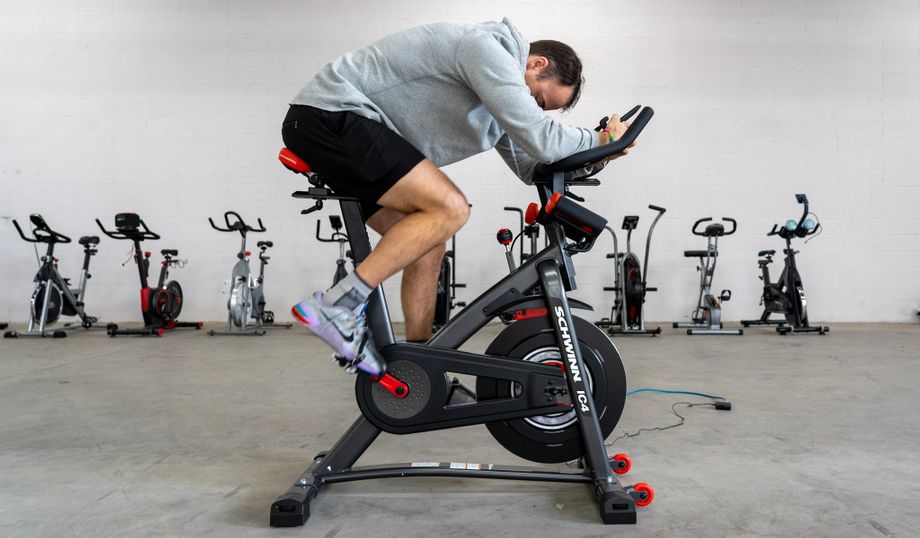We test and review fitness products based on an independent, multi-point methodology. If you use our links to purchase something, we may earn a commission. Read our disclosures.
Are you looking for a low-impact workout that can improve your overall health and wellness? Get ready to stay put and push the pedal to the metal. Cycling indoors on a bike that goes nowhere (we promise it’s a lot of fun!) is surprisingly therapeutic and offers customizable intensity levels.
RELATED: Stationary Bike Workouts For Beginners
Whether you’re clipping in for the first time or have recently decided it’s time to get back in the saddle, an indoor bike can offer you a wide range of stationary bike benefits, including improved strength, reduced disease risk, and better health markers. You can take a virtual cycling class or create your own ride—the benefits of this type of exercise are undeniable!
If you’re on the fence about purchasing a stationary bike—maybe you’re considering a treadmill instead—we’re here to show you why it’s a good investment for your health and worth implementing into your exercise routine.
RELATED: Exercise Bike vs Treadmill
9 Stationary Bike Benefits You Should Know
Here are our top 9 stationary bike benefits:
1. Improved Endurance
Riding a stationary bike is an excellent way to improve your cardiovascular and muscular endurance, plus your stamina, with less risk of injury. Let’s be honest, whether you’re an avid runner or into strength training, we all want the ability to exercise for more extended periods without fatigue. Quality training equals better results for performance, muscle-building, and overall health.
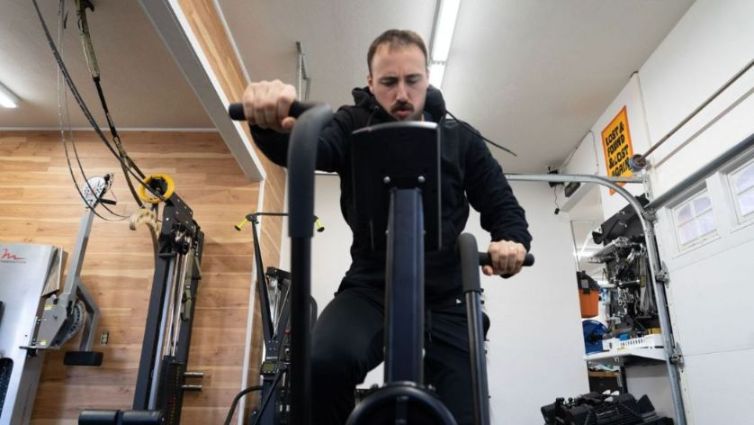
Even if you’re not a fitness enthusiast and want to use a stationary bike to incorporate regular exercise, the consistent movement from pedaling and activated muscle engagement from simply your body weight will increase your endurance. The stationary bike benefits can translate to other areas of your life, such as keeping up with your kids, giving you sustained energy, and improving your quality of life.
2. Improved Cardiovascular Fitness
There are plenty ofstationary bike benefits. A stationary bike is one of the best cardio machines and can effectively raise your heart rate, which improves cardiovascular health. This exercise can be just as beneficial as running or jogging for improving heart health.
A healthy heart can positively impact your blood pressure, blood flow, and keep cholesterol low. The more you implement cardiovascular activities into your exercise routines, the quicker your body pulls needed oxygen from your blood during workouts. A heart that’s conditioned from exercise allows you to handle stress better and improves your exercise recovery.
Another benefit of biking and heart health: Even a little bit may make a difference in your chances of developing heart disease. A 2016 study published in Circulation1 found that ridership was linked with lower rates of heart disease. So whether you’re gearing up for a leisurely ride or some intense exercise, the more time you spend on your bike may lower your chances of developing heart disease.
3. Low-Impact Workout
Cycling on a stationary bike is a low-impact exercise that can benefit all; from active athletes to older trainees, this form of exercise puts less stress on the joints. In fact, a stationary bike is easier on your joints than running or even road cycling. A 2016 Journal of Rheumatology study2 even found that cycling reduced joint stiffness, swelling, and pain, and enhanced the quality of life in middle-aged and older adults with osteoarthritis.
RELATED: Best Exercise Bikes For Seniors
4. Better Health Markers
Cardiovascular exercise on a stationary bike can also improve a wide range of health markers from cholesterol, insulin resistance, and blood pressure, to name a few.
Riding a stationary bike can naturally help increase good cholesterol levels in our bodies. According to a 2010 randomized-controlled trial3, using a stationary bike three times per week for 45 minutes over a 12-week timespan raised HDL (good cholesterol) levels by 8%, whereas diet alone only raised them by 2%. In addition to raising HDL levels, the study also suggested that regular exercise on a stationary bike can help reduce dangerous triglycerides as well. High triglycerides contribute to the hardening of the arteries or the thickening of the artery walls, which increases the risk of stroke, heart attack, and cardiovascular disease.
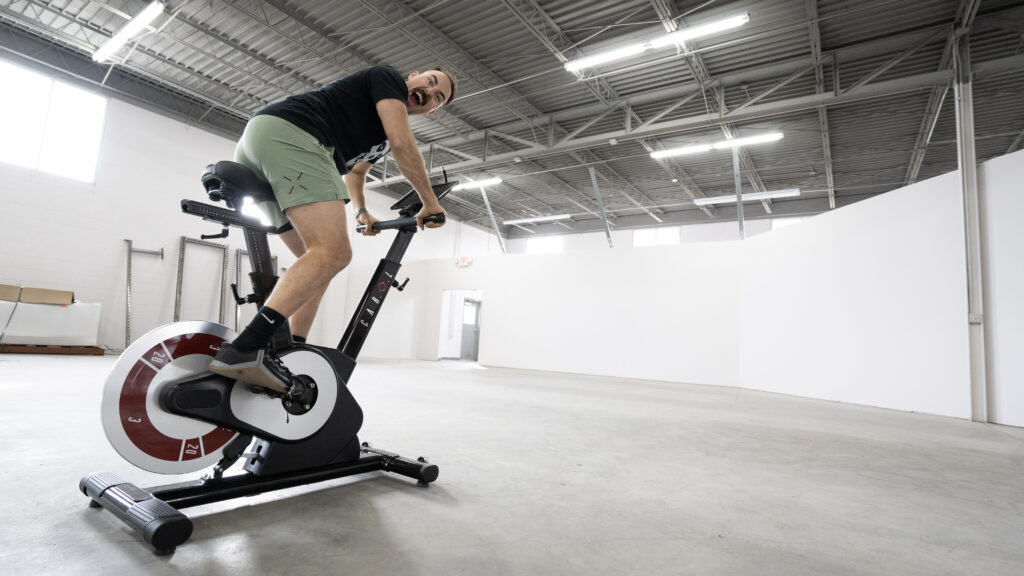
Physical inactivity and obesity are the leading risk factors for type 2 diabetes, and regular indoor cycling can help lower this risk. Another 2016 study4 showed that cycling-based training was more effective than standard aerobic exercise in reducing insulin resistance.
If you want to lower your blood pressure, riding a stationary bike can help, too. A 2017 study5 demonstrated that young male patients with Type 2 Diabetes saw a reduction in blood pressure over a six-month span of cycling 25 kilometers per day for at least five days a week. Aerobic exercise like cycling helps to make your blood vessels more elastic, which helps to increase blood flow.
5. Strengthens Legs and Lower Body Muscles
Don’t let the stationary bike trick you into thinking it’s only for cardio. This piece of equipment is also a strength-building machine and a good workout for your legs. Regular riding can strengthen your calves, hamstring, glutes, and quadriceps.
When you’re on a cycling machine, your body is in constant motion. Your legs are pushing and pulling. Your core naturally begins to engage from the movement of your legs. All of these movements are compoundstationary bike benefits for strengthening your legs and lower body muscles. This increased strength can help make everyday activities easier and improve your performance in other exercises.
6. Safety
One thing to consider when riding an indoor stationary bike is increasing your level of safety compared to cycling outdoors. When riding outside, you have to be aware of your surroundings, avoid obstacles in your path, and protect yourself from cars. When riding inside on a stationary bike, you can stay focused on your workout without having to worry about anything else other than giving your best.
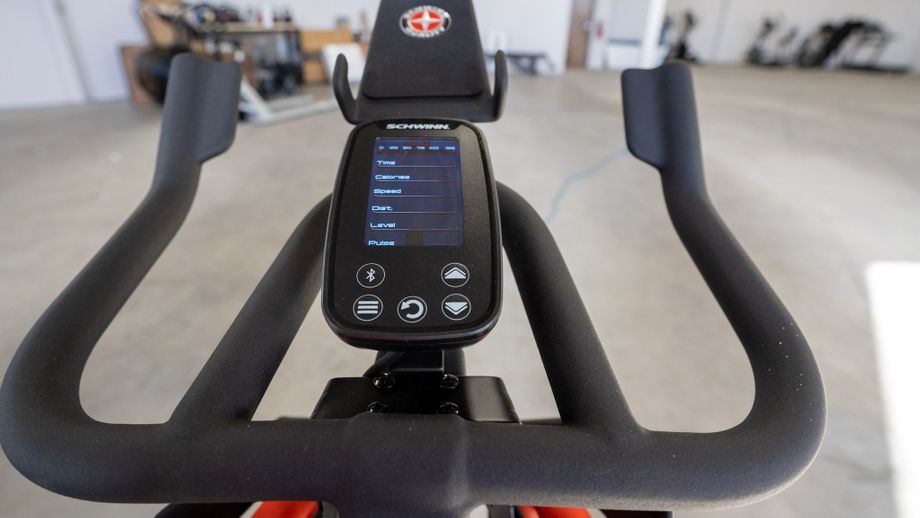
Another bonus to indoor cycling is that you can ride no matter the weather. If you’re working from home and dread the thought of sitting through another work call in your chair, or want to catch up on a podcast episode, you can opt to multitask on your low-impact stationary bike.
7. Can Help Burn Calories
Although a combination of diet and exercise is the best approach for weight loss, cycling can help you burn calories. The faster you cycle, the more calories you’ll burn because your body uses more energy to pedal quicker. Specifically, intervals of high-intensity cycling can burn a significant number of calories in as little as 30 minutes. According to Harvard Health6, for a moderate 30-minute stationary bike workout, a person weighing 155 pounds can expect to burn about 250 calories.
8. Mental Health Benefits
Stationary bike benefits and riding offers more than physical health benefits. It’s also a great way to reduce stress levels. Endorphins—the body’s feel-good chemical—are released when you exercise, helping you feel great post sweat-session.This calmness can last long after your workout is over, allowing you to handle stress in your everyday life better.
In addition to lowering stress levels, regular exercise can also reduce anxiety and depression. And if you exercise with others, it can be a great form of social interaction, increasing feelings of happiness.
9. Accessible For All Fitness Levels
Stationary bike riding is an excellent exercise for all fitness levels. Whether you want to work out at low intensity, moderate intensity or high intensity, whether you’re just starting or are a seasoned athlete, there’s a stationary bike that can accommodate your needs. It’s also an option for someone recovering from an injury who needs low-impact cardio exercise.
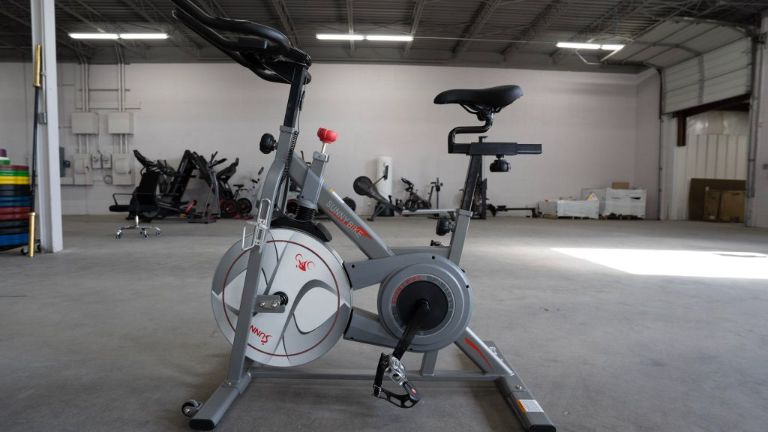
Stationary bikes allow you to customize speed and resistance, making them accessible no matter where you are in your fitness journey. Everyone in your household can use the same bike, too, since you’re able to adjust the settings for each rider. If you’re unsure where to start when it comes to workouts, many cycling apps or in-person classes are available, both paid and free, to guide you.
Workouts on a Stationary Bike
When it comes to improving your health, there’s no doubt that riding a stationary bike has a lot to offer. These bikes can help you reach your fitness goals, lose weight, build lower body strength, reduce stress levels, and promote better sleep quality. Below are some workouts you can try on a stationary bike.
Remember that any new form of exercise will feel challenging at first, so start easy and give yourself grace. After a five- to 10-minute warm-up at a comfortable pace with low resistance, slowly increase the resistance and speed in small intervals. This will be your baseline, and you can continue to increase it so that you’re working slightly harder. After maintaining that pace, start to slow down and decrease resistance before finishing with a cool down.
RELATED: Are Exercise Bikes Good For Weight Loss?
Interval Training
Interval training workouts involve a series of high-intensity resistance and speed levels, interspersed with rest periods of lower intensity. Begin with a warm-up of gentle cycling, then alternate periods of about 60 seconds of total effort with 90 seconds of recovery. Repeat this about four times, and then finish with a six-minute recovery of easy cycling.
Recovery
Go easy on a stationary bike for 30 to 45 minutes and keep your heart rate low if you plan to use a stationary bike for a recovery workout.
Safety Tips
As with any exercise, warming up and stretching go a long way in preventing injuries. But there are some other things you need to do to stay safe on a stationary bike, too.
- Make sure your bike is assembled correctly and that all screws are tightened, and position the seat and handlebars so that you can maintain proper posture while riding.
- Adjust the bike according to your height and ensure that the seat is parallel with your hips. The handlebars should be a forearm’s distance from the start of the seat.
- Keep your shoulders relaxed and bring them away from your ears as you ride. To perfect your form, your upper body should be slightly leaning forward with a straight spine. Your core should be engaged, and you should have a slight bend in your elbows.
- Place your stationary bike in a basement or the first floor of your house, where it stays cooler in the summer and warmer in the winter. Upstairs rooms tend to be less insulated, which means your ride could be a little uncomfortable. Don’t place your bike in an area that gets too hot because you’re going to be working up a sweat! You might consider adding a fan to the room to help keep you cool.
- Be sure there is enough clearance around your bike, so it’s easy for you to get on and off and move freely.
Types of Stationary Bikes
There are different types of stationary bikes, and each one has its own uniquestationary bike benefits and drawbacks. Each type serves a different purpose, and the best exercise bike for your home gym depends on your personal needs. The main differences are the seating positions and features.
Upright
Upright bikes have a large, padded seat and two pedals with high-positioned handlebars. They provide a great cardio workout and are ideal for people just starting with cycling.
| Pros of Upright Bikes |
| Target more muscles during your workout |
| Perfect for people new to indoor cycling |
| Cons of Upright Bikes |
| Doesn’t allow you to stand while riding |
| Narrow frame |
Recumbent
With a reclined seat and back support, recumbent bikes are ideal for people with back or knee problems. They also provide a great cardio workout.
| Pros of Recumbent Bikes | |
| Ideal for seniors | |
| The saddle of the seat is very large, making it comparatively comfortable |
| Cons of Recumbent Bikes |
| Takes up more space |
| Some people find them boring and less intense |
Related: The Best Treadmills for Seniors
Air Bike
Instead of a flywheel, air bikes use a large fan blade to create resistance. There are no adjustment knobs for the resistance levels because it depends on the fan’s speed and how fast you pedal. On many models, there are also levers—attached to handlebars—you push and pull with your hands. Because it’s so manual, these bikes are ideal for people who want an intense air bike workout.
| Pros of Air Bikes | ||
| Ideal for high-intensity interval training, with an upright position and relatively comfortable seat that can be used for steady-state cardio | ||
| The air bike structure is lightweight and easy to move around |
| Cons of Air Bikes |
| Slightly bigger than a cycling bike |
| Requires more effort than other stationary bikes |
Cycling Bikes
These bikes have a small, racing-style seat and two pedals. They are perfect for people who want an intense, high-intensity cycling workout with adjustable resistance.
| Pros of Cycling Bikes |
| Provide an intense, high-intensity cycling workout |
| Small and simplest of the bike types |
| Cons of Cycling Bikes |
| Can be uncomfortable for people with smaller frames |
| Not as suitable for beginners as other types of stationary bikes |
So, which type of stationary bike is right for you? It depends on your fitness level and needs, along with your budget and the space you have available. If you need to stick to a lower-priced option or have limited space, there are stationary bikes for you, too, including folding bikes that are compact and lightweight for small spaces.
But, overall, the upright stationary bike is a good choice for most people, while the stationary recumbent bike is a good choice for people with back problems. And, if you’re looking for an intense cycling workout, the cycling bike is a perfect fit.
How To Choose A Stationary Bike
So you’ve read up on the many stationary bike benefits and are ready to find the best option for one home gym. Here are a few tips for starting your search:
- Type: Review the different types of stationary bikes (listed above) and decide which model best fits your fitness level and goals.
- Footprint: Check out the measurements of each bike you’re interested in to guarantee that it will fit in the available space. If you have lower ceilings, you may opt for a recumbent bike rather than an air bike. Some stationary bikes are even foldable for small spaces or storage.
- Budget: Stationary bikes can cost anywhere from $250 for the most basic models to $2,000+ for a stationary bike decked out with plenty of additional features.
- Features: Speaking of features, when shopping for a bike, you’ll want to determine what you can and can’t live without. Do you run hot and need a bike with a cooling fan? Maybe you can’t fathom completing a cardio session without a streaming screen. Or maybe you’re content with just easy pedals and basic metrics. Knowing what specifications you need to stay motivated can help you gauge the level of investment you’re willing to make for your new stationary bike. Remember, you want a piece of exercise equipment that you’ll use regularly, not another item that sits untouched in your garage and takes up space.
We highly recommend the NordicTrack S22i Studio Bike—we’ve even declared it the Best Overall Exercise Bike. We don’t take offense if this isn’t the bike for you; we’ve reviewed plenty of other exercise bikes on the site for you to peruse.
RELATED: How To Choose An Exercise Bike
Stationary Bike Benefits: Final Thoughts
Stationary cycling is especially significant because it can be tailored to any fitness level, making it an excellent choice for people of all ages and abilities. If you’re looking for an easy way to get moving and improve your health, indoor bikes are worth considering as a part of your workout routine. The stationary bike benefits provide cycling outdoors without many risks, making them perfect for those who want to get in some physical activity but don’t want to leave the house.
Stationary Bike Benefits: FAQs
Can stationary bikes burn belly fat?
There’s no way to spot-reduce body fat, but stationary bikes can help burn calories. Calorie burn, in conjunction with nutritional management, can help you lose weight overall. Where you hold fat on your body is highly genetic, but exercise is an effective tool for decreasing overall body fat.
Is 30 minutes on a stationary bike enough?
It depends on what your goals are. Thirty minutes on an exercise bike is great for overall health. If you’re doing a HIIT workout on a stationary bike, you wouldn’t even need 30 minutes. However, if your goal in riding a stationary bike is more endurance-based—i.e. you’re training for a race—you may need to ride longer. Consistency is key regardless, so aim for several days a week on the bike to reap the moststationary bike benefits.
How long should you ride a stationary bike?
You can ride a stationary bike for as long as you are comfortable. You may want to start with 10 or 15 minutes and work your way up to longer rides, such as 45 to 60 minutes. A workout of at least 20 minutes is ideal, and you should aim to get on the bike at least three days per week. A regular exercise routine is key to achieving your overall fitness goals.
What happens if you ride a stationary bike every day?
It’s alright to ride a stationary bike every day as long as you alternate between higher intensity/longer duration rides and recovery rides to allow your body to flush the buildup of lactic acid in your legs and rest properly.
References
- Blond, K, Jensen, M.K., Rasmussen, M.G., Overvad, K, Tjønneland, A, Østergaard, L, Grøntved, A. Prospective Study of Bicycling and Risk of Coronary Heart Disease in Danish Men and Women. 2016 Circulation, Volume 134, Number 18, https://doi.org/10.1161/CIRCULATIONAHA.116.024651.
- Mohammed Alkatan, Jeffrey R. Baker, Daniel R. Machin, Wonil Park, Amanda S. Akkari, Evan P. Pasha and Hirofumi Tanaka. The Journal of Rheumatology. March 2016, 43 (3) 666-672; DOI: https://doi.org/10.3899/jrheum.151110.
- Valle VS, Mello DB, Fortes Mde S, Dantas EH, Mattos MA. Effect of diet and indoor cycling on body composition and serum lipid. Arq Bras Cardiol. 2010 Aug;95(2):173-8. English, Portuguese. doi: 10.1590/s0066-782×2010005000080. Epub 2010 Jul 2. PMID: 20585735.
- Walter Verrusio, Paola Andreozzi1, Alessia Renzi, Andrea Martinez, Giovanni Longo, Marco Musumeci, and Mauro Cacciafesta. Efficacy and safety of spinning exercise in middle-aged and older adults with metabolic syndrome: randomized control trial. Ann Ist Super Sanità 2016 | Vol. 52, No. 2: 295-300. DOI: 10.4415/ANN_16_02_24
- Jhingan A, Jhingan RM. Effect of Cycling on Glycaemia, Blood Pressure, and Weight in Young Individuals with Type 2 Diabetes. J Clin Diagn Res. 2017 Jul;11(7):OC09-OC11. doi: 10.7860/JCDR/2017/28111.10162. Epub 2017 Jul 1. PMID: 28892953; PMCID: PMC5583829.
- Calories burned in 30 minutes of leisure and routine activities. Harvard Health. (2021, March 8). https://www.health.harvard.edu/diet-and-weight-loss/calories-burned-in-30-minutes-for-people-of-three-different-weights
Further reading

The Marrs Bar is a safety squat bar with a unique camber. Our Marrs-Bar safety squat bar review tells you why this speciality bar is, well, so special. Read more

Two smart rowers with different types of resistance, which will you choose in the matchup between CITYROW vs Hydrow? Read more

Are you looking for a low-impact workout that can improve your overall health and wellness? Get ready to stay put and push the pedal to the metal. Cycling indoors on a bike that goes nowhere (we promise it’s a lot of fun!) is surprisingly therapeutic and offers customizable intensity levels. RELATED: Stationary Bike Workouts For BeginnersWhether you’re clipping in for the first time or have recently decided it’s time to get back in the saddle, » Read more about: Put the Pedal to the Metal: 9 Stationary Bike Benefits » Read more

Looking for a HIIT bike workout to help you break a sweat? Team GGR has you covered with four ideas. Read more

